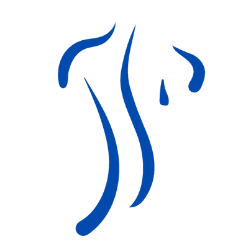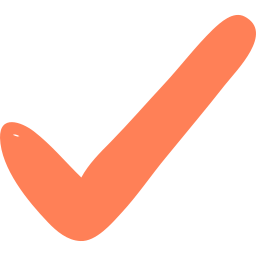Shock wave therapy is a treatment used to help heal chronic injuries. It is also used to help improve the function of muscles and joints. Shock wave therapy is an effective treatment for many conditions. Still, some people are concerned about whether or not it hurts, which is normal when you hear the word ‘shock’ In this blog post, we will explore shock wave therapy and answer the question “Does shock wave therapy hurt?”.
Does Shock Wave Therapy Hurt?
Yes, shock wave therapy can be uncomfortable – but is tolerable. However, the amount of energy or power used is determined by the client’s tolerance level. It should never reach an intolerable level of discomfort. The general consensus among professions who use shock wave therapy in practice, is that the pain should never go above 5 out of 10 on the pain scale.
Some discomfort is normal and is actually a sign that the shock waves are targeting the right area, for example, an area of tension or tight tissue in a muscle or tendon.

What Is Shock Wave Therapy?
Shock wave therapy uses high-powered sound waves that pass through the skin to the underlying tissue. These high-powered sound waves break up tight knots or trigger points in muscles or dissolve calcifications in the case of kidney stones or Dupuytren’s Contracture. Shock wave therapy stimulates an inflammatory response that results from micro-trauma; in other words, it kick-starts the healing process, as inflammation is necessary for optimal healing. In turn it reverses chronic conditions, such as tendinopathies, chronic low-back or neck pain, or chronically tight muscles.
Who Would Benefit From Shock Wave Therapy?
Shock wave therapy is indicated for chronic, long-term conditions, it is only indicated if your complaints or symptoms have be present for more than 3 months, and your symptoms are stable, meaning the intensity stays the same. Since shock wave therapy causes an inflammatory response to break up and than rebuild healthy tissue, it is not a good idea to use it on a new injury or an area that is in an acute flare-up, for example, a swollen joint or an acute muscle tear or strain. Shock wave therapy has also widely been used for non-union fractures, and pelvic floor dysfunction.

Shock wave therapy is an effective treatment for many conditions, including:
- Achilles tendinopathy.
- Patellar tendinopathy.
- Dupuytren’s Contracture.
- Rheumatoid arthritis nodules.
- Plantar Fasciitis.
- Trigger points or tight knots.
- Chronic back pain.
- Chronic neck pain.
- Chronically tight muscles.
- Bone spurs.
- Cellulite.
- Calorific Tendinitis of the shoulder.
- Frozen or stiff shoulder.
- Non-union fractures.
What Are The Contraindications For Shock Wave Therapy?
As aforementioned, shock wave therapy to not a good idea for any acute injury, such as, a muscle spasm, muscle tear, swollen joint, nerve pain, anything that we would refer to as ‘on fire’ or irritated. In other words, any condition in which inflammation is already present, and the natural healing process of the body is apparent. Shock wave is also not indicated if you are pregnant or have cancer. It should also be avoided around the heart if you have a pacemaker or have been prescribed anti-coagulant medication due to a blood clotting disorder.

Contraindications For Shock Wave Therapy:
- Pregnancy.
- Nerve pain (i.e sciatica).
- Blood clotting disorder.
- Acute flare-up.
- Muscle spasm.
- Muscle tear or sprain.
- Swollen, hot joints.
- Cancer.
- Scar tissue.
- Have received a steroid injection in the past 6 months.
- Any conditions that have been present for less than three months.
- Any condition in which inflammation is present.
How Many Sessions Of Shock Wave Are Needed?
Shock wave therapy is typically done in a series of treatments, usually once per week, with a week in between sessions, for three to six weeks. Each session is relatively quick – lasting 5-15 minutes, depending on the number of areas to be treated.
What To Expect After Shock Wave Therapy?
Immediately, after the treatment session is it normal to feel ‘looser’, less resistance and restriction, your range of motion may improve. However, it is normal to feel some discomfort for 3-5 days after shock wave therapy as the inflammatory response we were looking for sets in.
This response is completely normal and the desired response. This pain does subside after a few days. If the response is quite intense, you should let your therapist know, they might continue the treatment at a lower energy level or modify your treatment plan accordingly, to include something more suited to you.
After shock wave therapy, the body has essentially started the recovery process, which requires additional energy, so it is very normal for some people to feel tired. But there is no down time, I would simply say, listen to your body, if it is feeling a little sore after the treatment, moderate exercise is good, but maybe avoid an intense training session.

How To Get The Most Out Of Your Shock Wave Therapy Treatment?
Shock wave therapy works best along side exercise therapy. To give yourself the best chance at an optimal recovery it is important to exercise regularly to compliment other therapies. Moderate exercise, such as walks, bike rides, swimming, or doubles tennis, between sessions is a great way to see better outcomes and take your recovery into your own hands.
With all therapies, including exercise therapy, the idea is that we simply want to give the body the best input to aid the regeneration of healthy, strong, and organized tissue. In other words, to improve the integrity and the structure of our muscles, tendons, ligaments, skin, bones, and all the systems of our body so we can build our tolerance to stress and prevent break-down, simply function at a high level.
Conclusion
I hope you found this blog helpful and informative. If you have any questions please do not hesitate to contact me at [email protected], and if there is anything else you would like me to write about, just let me know!
Thank you for reading!
References
[1] https://www.ncbi.nlm.nih.gov/pmc/articles/PMC3889306/
[2] https://pubmed.ncbi.nlm.nih.gov/26209782/
[3] https://shockwave-therapy.co.uk/contraindications
[4] https://www.shockwavetherapy.org/fileadmin/user_upload/ISMST_Guidelines.pdf




